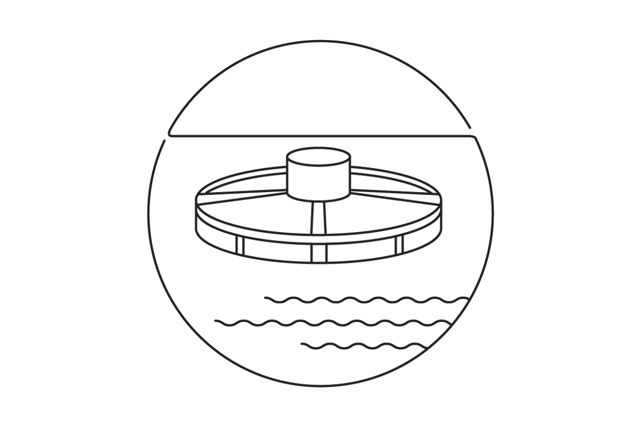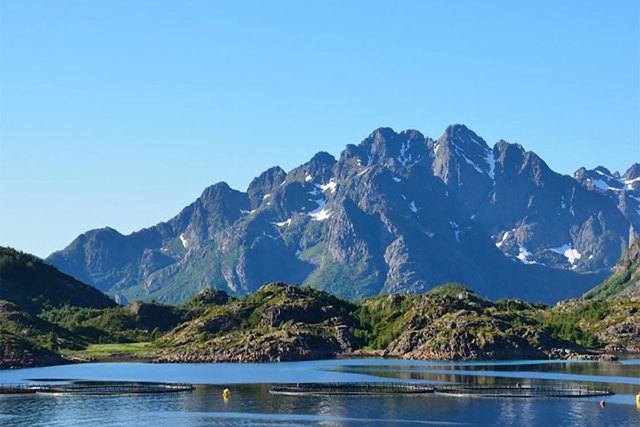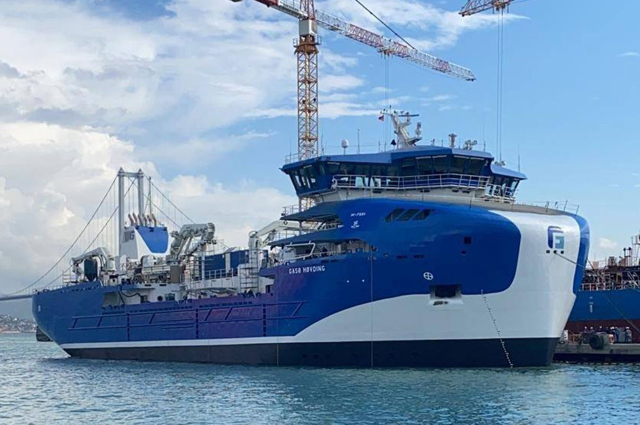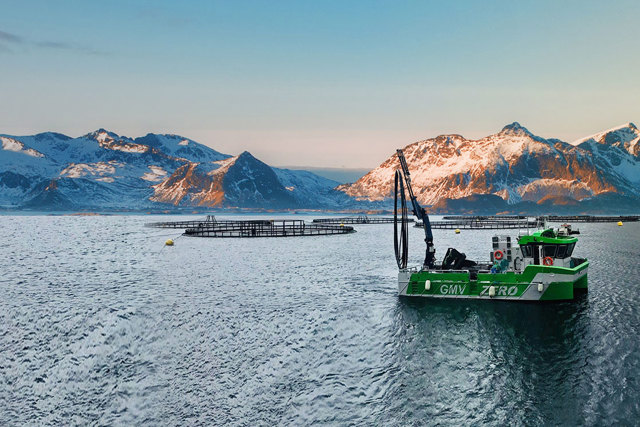Fish farming
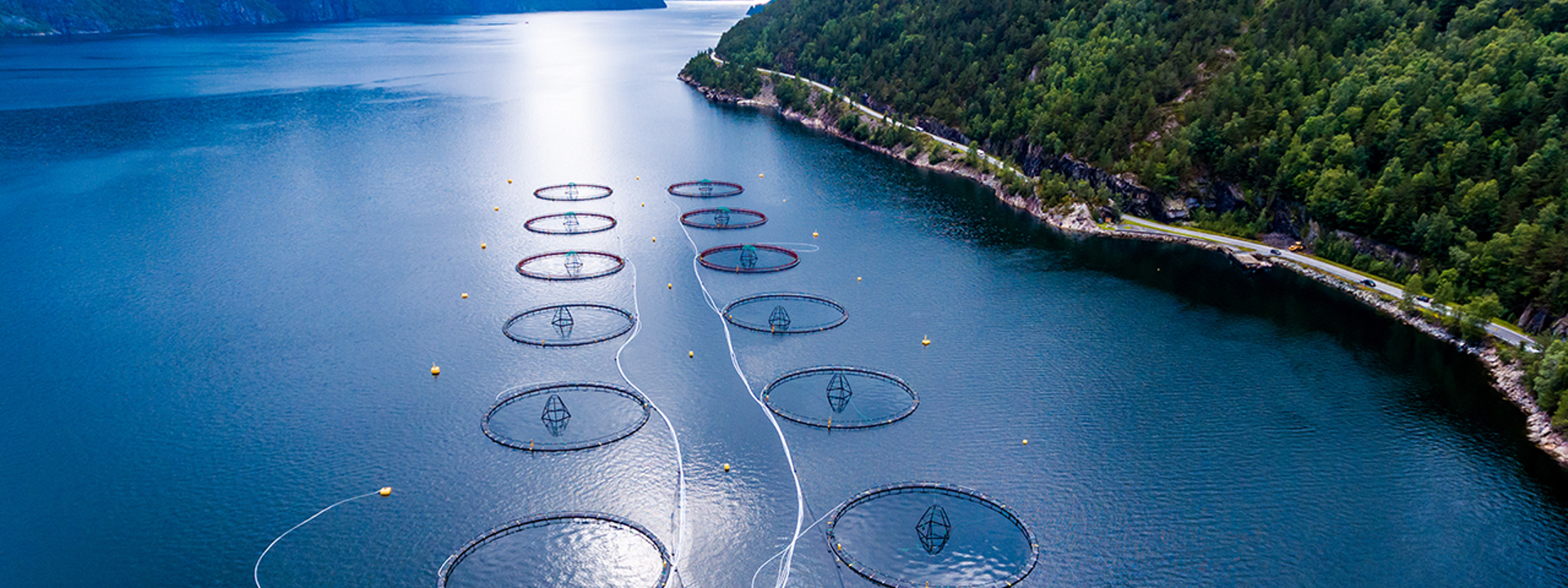
Fish farming
Aquaculture is a booming industry, as farmed fish is set to become a key part of the world's food production. Danfoss is a leading provider of advanced technology and our experienced team helps fish farmers around the world feed their business potential.
Feed the business potential of sustainably farmed fish
The rapidly growing world-population has an increasing appetite for fish. This demand cannot be met with wild fish alone, as many fish populations are in decline; several wild salmon populations, for instance, are on the brink of extinction.
Fish farming has the potential to supply much-needed animal protein to the world and create new business opportunities. But there is a call to ensure that the growing number of fish farms raise fish in a sustainable manner.
Part of fish farming from day one
As a close partner to the fish farming industry since day one, Danfoss have developed the technology and know-how to support a sustainable future for fish farming. With our unmatched technology and experience in aquaculture, we can help you design efficient solutions to feed your aquaculture operation's potential in an environmentally friendly manner.
Advanced technologies for all types of fish farming
Our advanced aquaculture technologies cover the entire value chain from egg to plate and can be used in any type of fish farming operation.
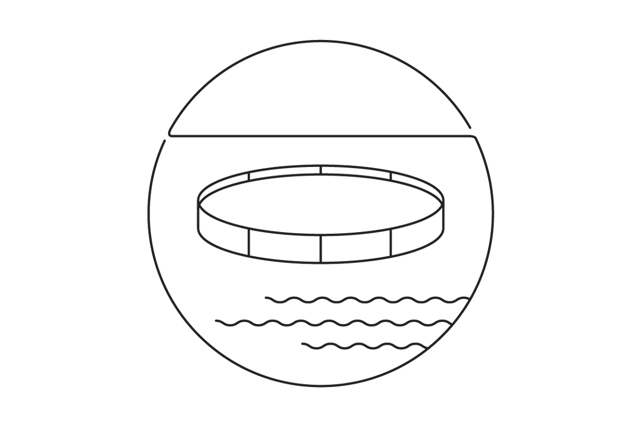
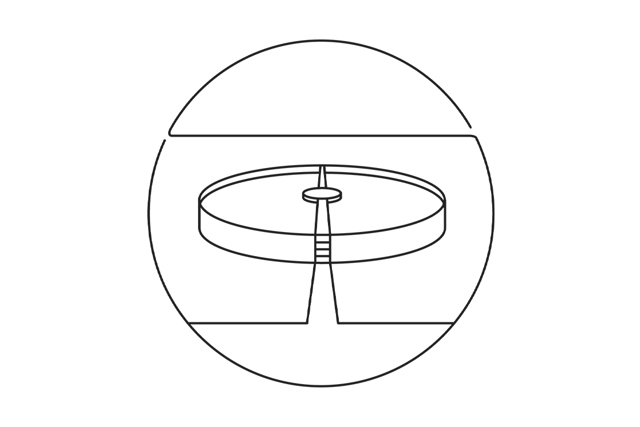
Water pump control for recirculating aquaculture systems
In a recirculating aquaculture system (RAS) for landbased and smolt farms, fish are reared at high density in indoor tanks. In this carefully monitored and closely controlled environment, precision pump control is essential for optimizing fish health and efficient energy consumption.
The volume of flow in the RAS system tanks must be controlled to prevent excess ammonia and ensure adequate oxygen, depending on fish age. Larger, mature fish pollute more than small fish; hence the larger fish have a higher flow requirement. The same principle applies to blowers and pumps in the purification system.
Maintaining exact flow rates requires precise control, and this is where Danfoss can support you with technology compatible with any pump type, designed for long-term durability in harsh environments, and the connectivity required for modern IoT systems.
In a recirculation system using centrifugal or rotodynamic pumps and characterized by friction loss, you can achieve both precision and major energy savings by applying Danfoss technology to control pump speed. As little as 20% reduction in pump speed (20% lower flow rate) can reduce energy consumption in a recirculating aquaculture system by up to 50%.
Features and benefits
20% reduction in pump speed reduces energy consumption by up to 50%
Outstanding cooling concept conducts up to 90% excess heat away from the electrical room, significantly reducing air conditioning load
Edge Analytics embedded in the drive automatically defines operating baseline parameters corresponding to specific applications, for condition-based monitoring giving improved uptime
Embedded deragging function keeps impellers clean for consistently high pumping efficiency
Automatic adaptation to the motor and the application delivers additional 2-3% energy savings over the whole load range
Save space due to compact design with integrated sensors
Improve uptime with reliable IP66/NEMA 4X performance in harsh environments
Reduced installation costs with cable lengths up to 150m (unscreened) or 300 m (screened) with no additional components required
Solutions for recirculating aquaculture system pump control
Clean power with harmonic mitigation
In all aquaculture farms, a stable clean power supply with efficient harmonic mitigation is an essential aspect of running a profitable operation. Harmonic interference in the power supply can cause unnecessary power loss and result in extra wear and tear reducing equipment life. Therefore, good harmonic mitigation is a valuable investment in optimizing efficiency in the entire fish farm facility.
So, can we even speak of cost-efficient harmonic mitigation at all? We certainly can, and here is why: The presence of harmonics escalates risk, affects product quality, and increases operating costs. Mitigating harmonics delivers indirect energy savings by reducing the losses in transformers, cables, and devices. These indirect savings are the reason systems equipped with harmonic mitigation solutions, independent of the technology used, demonstrate better overall system efficiency.
When it comes to harmonic mitigation, there is no single solution on the market that does it all, however the aim is to balance the best performance, at lowest cost with highest system efficiency. At the same time, the system must satisfy all norms and fit all sizes of equipment, and work equally well in new and retrofit installations. Select the most economical and technically superior solution for a given installation based on the application requirements, the severity of harmonics, the costs, and the benefits associated with the various technologies.
Features and benefits:
The Danfoss advanced active filter (AAF) solution takes up less space than traditional harmonic mitigation solutions, and costs less to install.
Operating costs are low since advanced active filters use less energy in operation.
The Danfoss design for harmonics mitigation combines AAF technology with our unique back-channel cooling concept to achieve a 50% reduction in heat loss in the system, compared to a traditional AFE setup.
Harmonic mitigation with active filter solutions ensures higher uptime.
Solutions for fish farming clean power:
Temperature control for fish farms
Temperature is a critical control element in the overall process operation for recirculated aquaculture systems (RAS) as it not only contributes to optimum fish growth, as well as significantly reduces operational energy costs.
Temperature is generally controlled by a heat pump or chiller system which provides heating or cooling across the full fish grow out process from smolt to full grow out production. Sizing of the heat pump needs to consider the entire energy balance to maintain a stable water temperature, therefore, the cooling capacity calculation must meet the heat gains from a variety of heat sources:
- Fish metabolism
- Fresh water intake
- Bio-filtration process
- Environmental climate / building intake
- Water recirculation (pumps)
Reducing cost per kilo produced fish with energy optimised systems
Focusing on the application as a complete system enables Danfoss to provide customers the opportunity to control the cost per kilo of produced fish, by focusing on the following key technologies:
- Performance modelling of the heat pump system, to ensure the highest coefficient of performance (COP)
- Utilization of spare heat or cooling from the heat pump process including wastewater return, to reduce operational energy costs
- Oil free compressor technology. When compared to fixed speed this offers 40% part load efficiency, reduced noise, lower operational maintenance costs, and digital monitoring
- Gasketed heat exchangers (Stainless or Titanium) for heat transfer within the water intake, heat pump, or in heat recovery system
- Industrial sensors and pressure transmitters for temperature and pressure control
- Manual, mechanic and electric valves for Ammonia refrigeration systems
- Hydronic balancing valves used throughout the heat pump system
Building HVAC control
Recirculating aquaculture systems use both fresh and varying salinity levels to seawater of which can be corrosive if the temperature between the farming process and building are not accurately controlled. Therefore, a precise control of the HVAC system is critical to maximize energy efficiency and minimize replacement and maintenance costs.
Danfoss provide customers the opportunity to control the entire process, by focusing on the following key technologies:
- Performance modelling of the heat pump system to ensure the highest coefficient of performance (COP) and utilization of spare heat or cooling capacity to reduce energy operational costs across the facility
- HVAC frequency drives including conditioned based monitoring (Vibration, load envelope, stator winding)
- HVAC Hydronic balancing control valves and design services
- Energy metering and comfort controls
- Radiator and smart room thermostats and underfloor heating
- Supporting tools: Cool Selector (HVAC), Heat Selector (Buildings)
- Additional to HVAC building control, Danfoss can supply SEM-SAFE® building high pressure water mist fire safety systems
Solutions for recirculating aquaculture temperature control
Solutions for fish farming vessels
Wellboats with energy efficient sea lice treatment
The aquaculture industry relies on wellboats to transport smolt to sea, sort and move fish between sites, and for sea lice treatment.
The world’s leading wellboat designers choose Danfoss APP oil-free pumps for off-shore aquaculture for energy efficiency and reliability, of course, but also because they present zero risk of oil contamination and easily adapt to pressure changes.
The industry is driven by a high level of technological innovation to ensure sustainability and minimize environmental impact. Boosting productivity and complying with the world’s strictest environmental regulations, Danfoss high-pressure pumps and energy recovery devices are at the heart of a new pioneering sea water reverse osmosis (SWRO) solution to remove sea lice from salmon gently, sustainably, and effectively.
Features and benefits:
Highest efficiency rates in the industry
High reliability due to highly corrosion resistant materials
Simple design ensures low maintenance
Fewer parts and a compact design save space for other purposes onboard a wellboat
Oil free lubrication eliminates the risk of contamination
Solutions for SWRO
Electrified workboats for fish farms
Fully electric or hybrid vessels allow operators to use the most optimal energy source for the required task, giving a range of benefits from less environmental emissions over noise reductions to reduced maintenance efforts.
Electrical power supported by power conversion technology is used to drive large electric motors connected to the propeller shafts.
Fully-electric vessels deliver full performance with zero emission of CO2 and NOx gases, for optimal protection of the fish from pollution. The noise reduction reduces stress levels in the fish.
Hybridization allows fuel-driven engines to run closer to the design point, resulting in fuel economy. Excess energy is stored in batteries for later use, ensuring that fuel-driven engines see smooth running curves. With hybrid solutions, batteries and smaller diesel generators operate in collaboration to provide energy to the vessel when it is idling, transiting, turning, starting, or stopping. Main engines can be stopped.
Features and benefits:
Noise reduction reduces stress levels in the fish
Full performance with zero emission of CO2 and NOx gases
Hybridization delivers better fuel economy
Vessel electrification and shore power supply ensure cleaner harbors
Using energy storage gives the capability to integrate renewable energy sources and reduce reliance on fossil fuels
Hybridization offers flexible ways to make supply and demand meet by bridging the lag between energy generation and consumption, dampening peak loads and bridging outages
Fish farming insights and cases
Discover how our advanced technology has helped global fish farming productions.

Aquaculture solutions
We offer technology and know-how that helps fish farmers and other aquaculture businesses feed the potential with sustainable and energy-efficient solutions.
Fish farming FAQ




